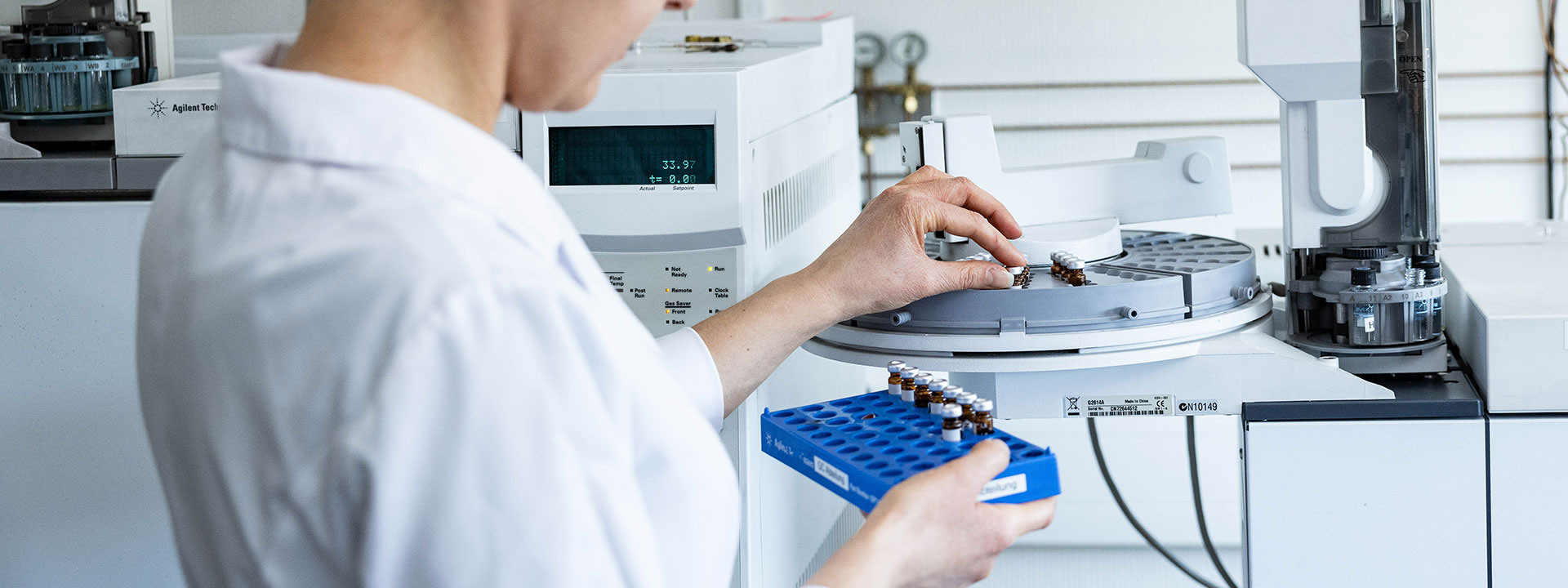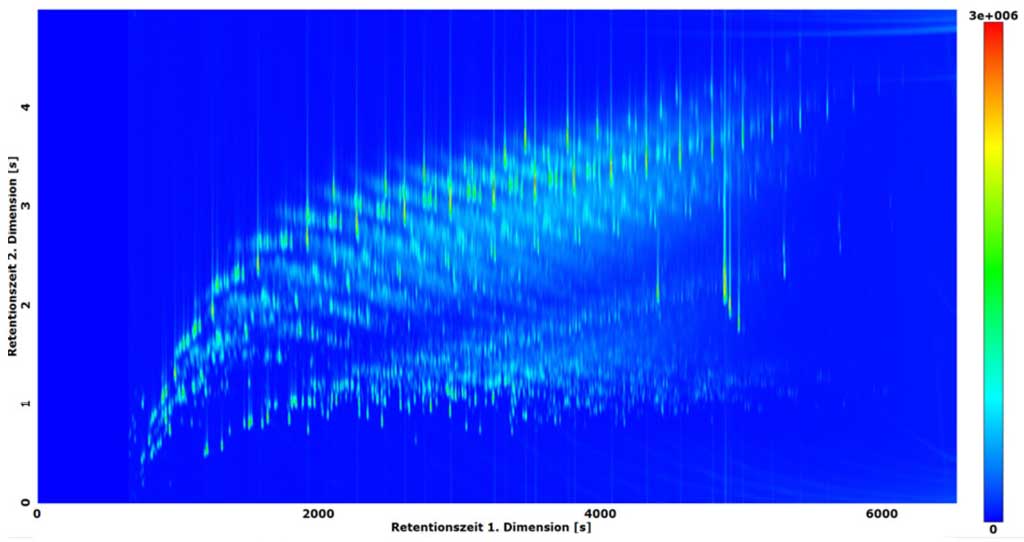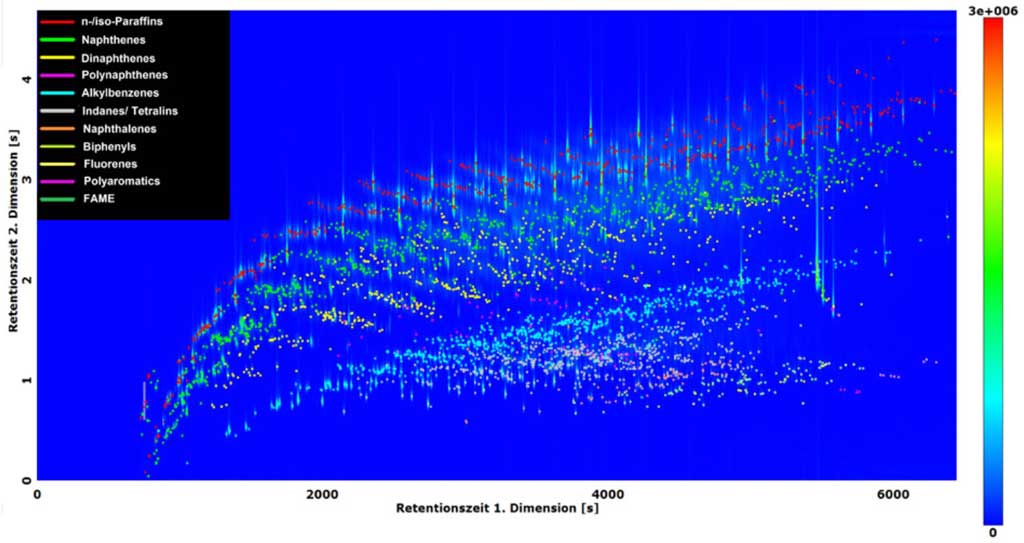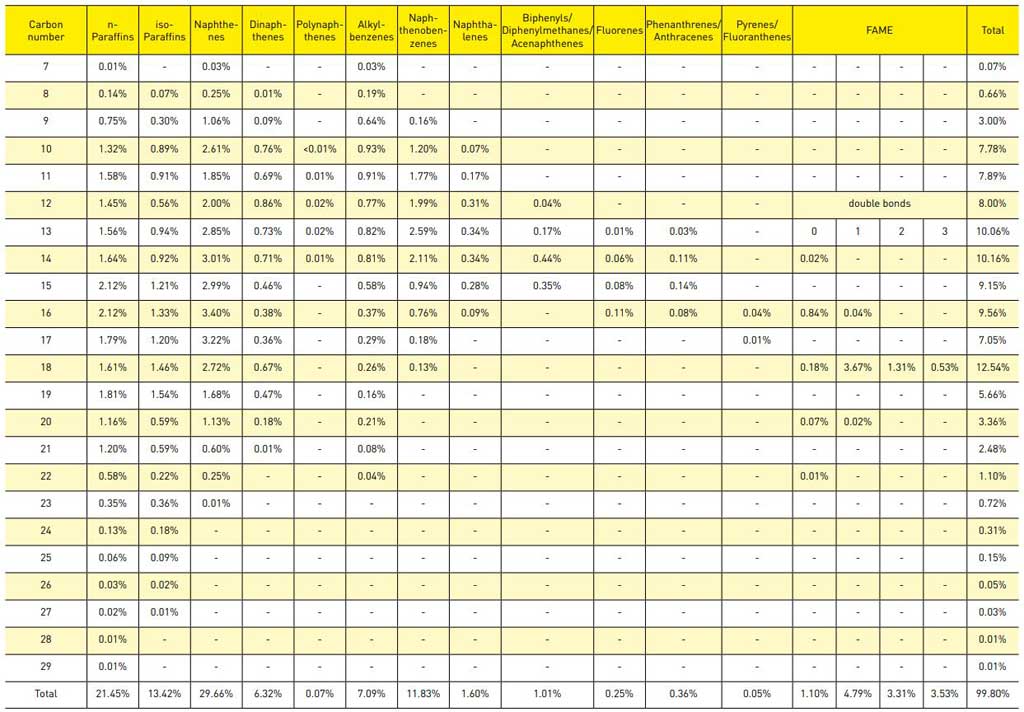Chromatographie (GCxGC)
Quantifizierung von Mitteldestillaten
ASG 2253 GC×GC-TOFMS | ASG 2502 GC×GC-FID
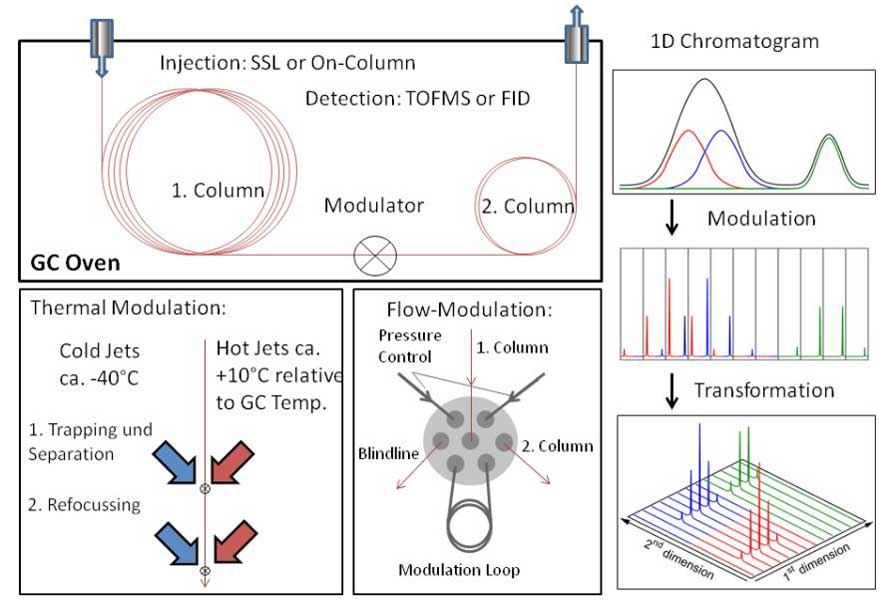
Die umfassend zwei-dimensionale Gaschromatographie (GC×GC) bietet die Möglichkeit einer detaillierten Auftrennung komplexer Kraftstoffproben und deren Unterteilung in unterschiedliche Substanzklassen und Einzelkomponenten.
Die ASG kann in diesem Bereich auf langjährige Expertise bauen und unterschiedliche etablierte Methoden zur Untersuchung von Mitteldestillaten und höher siedenden Proben anbieten.
Mittels GC×GC – FID können detaillierte Quantifizierungen aller fossilen Mitteldestillate (Jet Fuel, Diesel, Heizöl), sowie nachhaltiger Kraftstoffe (z.B. HVO, SAF) erzielt werden. Die hausinterne Methode ASG 2502 orientiert sich dabei an ASTM D8396.
Für höher siedende Proben steht zudem die HT – GC×GC – FID mit der hausinternen Norm ASG 2501 zur Verfügung.
Ein weitaus größerer Informationsgehalt kann mittels GC×GC – ToFMS erreicht werden. Die Kopplung mit Flugzeit-Massenspektrometrie ermöglicht eine schnelle Detektion von Massenspektren über einen großen Massenbereich. Die anschließende skriptbasierte Datenauswertung erlaubt eine automatisierte Zuordnung detektierter Massenspektren zu den entsprechenden Substanzklassen. Wir bieten hierzu eine Methode im Siedebereich von Mitteldestillaten (ASG 2253), sowie für höher siedende Proben (ASG 2221) an.
Beispiel eines 2D-Chromatogramms
In der folgenden Abbildung sehen Sie ein repräsentatives, zweidimensionales Chromatogramm von herkömmlichen Dieselkraftstoff gemäß EN 590, sowie die Ergebnisse der Datenauswertung und der Quantifizierung. Die Trennung wurde durch eine sogenannte „Umkehrphasen-Säulenkombination“, bestehend aus einer 50% phenylsubstituierten Säule als 1.Dimension und eine 100% Polydimethylsiloxan-Säule als 2.Dimension, erreicht.
Sie benötigen Unterstützung bei der Auswahl der richtigen GC-Methode?
Kohlenstoffanzahl: C5 - C12
Siedebereich 35°C - 210°C
PIONA und
relevante Oxygenate
ASTM D8071
GC-VUV
prEN 18015
GC-VUV, Alternative zu EN 22854 (Reformulyzer)
ASTM D8369
GC-VUV (VHA)
Kohlenstoffanzahl: C10 - C22
Siedebereich 170°C - 370°C
Gruppentypenanalyse für
Heizöl, Diesel, Jet A1, SAF
ASG 2502
GC×GC-FID
ASG 2253
GC×GC-MS
ASTM D8267
GC-VUV
Mono- und Diaromaten als Summenparameter, Alternative zu ASTM D6379
Kohlenstoffanzahl: C17 - C55
Siedebereich 300°C - 600°C
Kohlenwasserstoff-Gruppentypenanalyse
ASG 2501
HT-GC×GC-FID
ASG 2221
HT-GC×GC-MS Screening
Kohlenstoffanzahl: C5 - C64
Siedebereich 35°C - 630°C
ASTM D8519
GC-VUV

Michael Becker
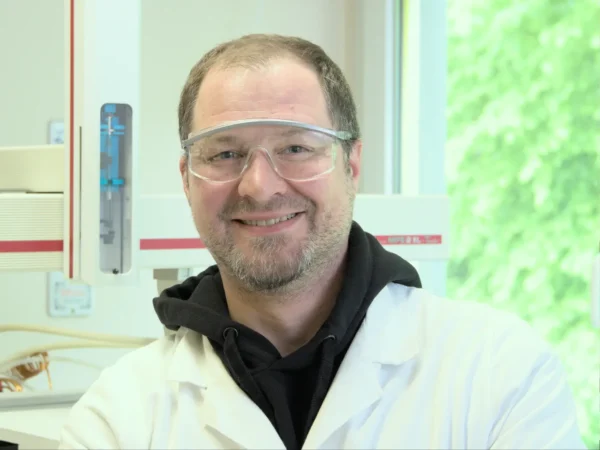
Dr. Max Jennerwein
Sie benötigen zusätzliche Analysen?
Unser Labor ist seit 1998 für die Analytik zahlreicher fossiler und biogener Kraft- und Brennstoffe akkreditiert.
